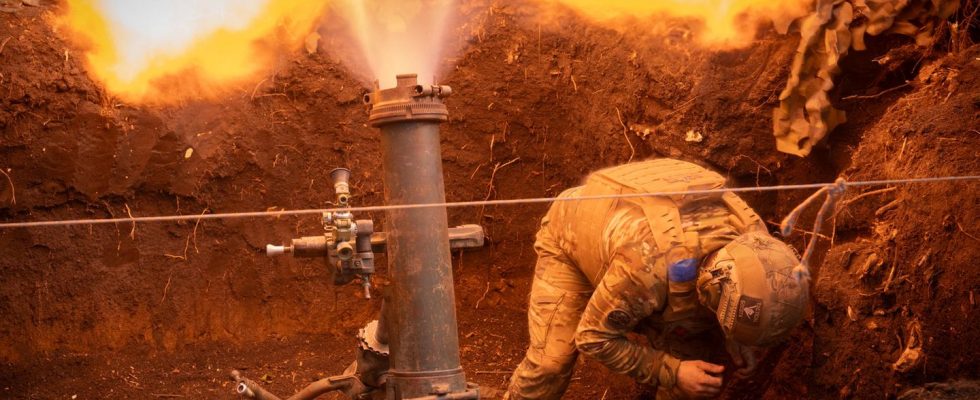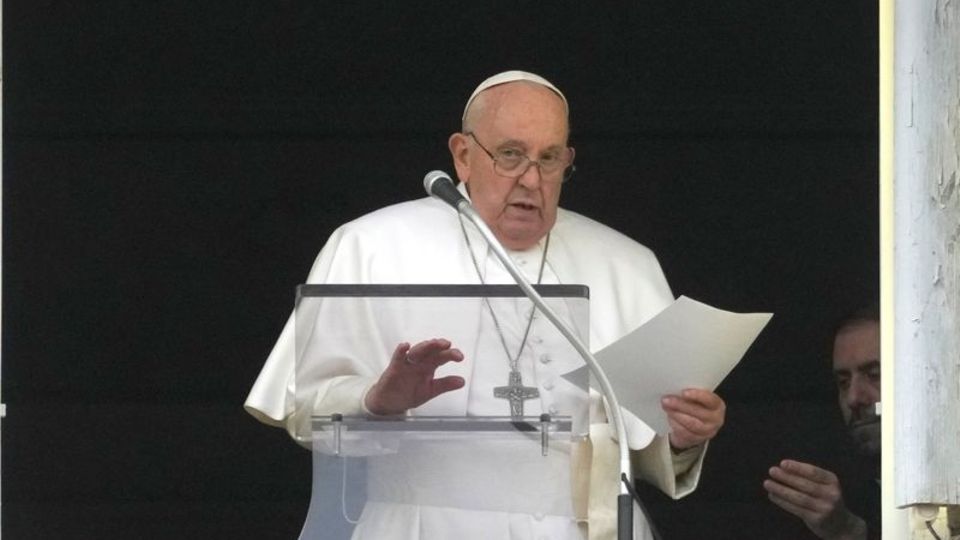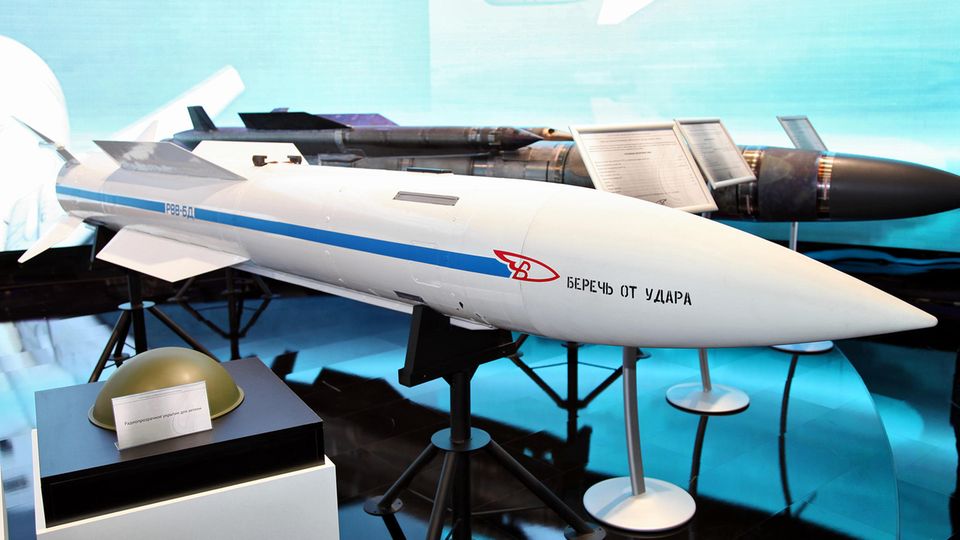The Pope has been criticized for his call to begin negotiations as quickly as possible. Francis only said what has been heard behind closed doors for weeks: without its own successful offensive, Kiev will inevitably have to seek salvation in diplomacy.
Is the situation really so dire that Kiev should agree to negotiations that would ultimately lead to the ceding of large parts of the country? If moral categories are left aside, the question of negotiations or the right time for them is easy to answer: it would be wise for Kiev not to hold negotiations as long as it can be assumed that its own position will improve as the war progresses. The more victorious the troops, the more positive results would be achieved. That was also the hope that fueled the summer offensive. At that time it was thought that Kiev’s troops would advance to the sea and cut through the Russian-occupied zone.
After such a triumph, Putin might have had to agree to a peace on Ukraine’s terms. As we now know, this did not happen. Worse still: the situation in Ukraine has deteriorated considerably over the winter after the failed advances and the Russian actions. Against this background, the call for negotiations only seems rational, at least for those who do not believe Kiev can achieve a new turnaround. Of course, he remains morally questionable.
The president says the front has been stabilized
The situation on the ground front is depressing. After the fall of Avdiivka, the Russians were unable to achieve a very deep breakthrough, but they are continually pushing back on the Ukrainians. To stop them, Kiev deploys its best troops. But they can only further delay the Russian advance; they have not achieved any operational success of their own. President Zelensky made people sit up and take notice when he said the situation had stabilized. That’s at best half the truth, after all, Kiev’s elite units are being worn out at the front. This is particularly evident in the losses of the M1 Abrams tanks – so far there are four, which doesn’t sound like a lot. But Ukraine only received 31 pieces in total. In addition to the tanks that were shot down, there were those that failed due to technical problems. The situation for the other Western tanks – Challenger 2 and Leopard 2 A6 – looks similarly bleak, with only a handful said to be still operational.
So the question arises, how long will Kiev’s troops be able to withstand Russian pressure? Historically, this is a situation like the Battle of Normandy after the Western Allies landed in France in World War II. At that time, the German Wehrmacht was able to stop and delay the advance of the overwhelming Allies for weeks, largely helped by the terrain. However, the troops were constantly weakened by the air superiority and the powerful artillery of the British and Americans – until at some point the last reserve was tied up at the front and the Americans were able to break out of the pocket.
How many more men can Kiev equip?
Kiev faces several problems. There is a shortage of soldiers and the country is becoming war-weary. The defenders who have been at the front for a long time should finally be replaced and an additional 500,000 people should be called up. Apparently they also want to change the unfair, sometimes corrupt practice of conscription. But it is more than questionable whether this will succeed. Half a million soldiers, that sounds huge. But these masses would first have to be trained and later equipped. Kiev will be able to train 50,000 men in its own country. Unlike the volunteers of the first year of the war, this time many recruits are likely to lack previous military knowledge; training would take at least two months, perhaps longer. Previously there had also been training abroad. If unwilling recruits are sent to the EU instead of volunteers, there is no guarantee that they will not evade service there. Even in the best case scenario, the 500,000 men are only likely to appear at the front gradually.
There they need equipment – not just tanks, but also trucks, boots, protective vests and other material. Such things are simply not available for 500,000 men. Currently, the influx of artillery, battle tanks and other equipment from the West is unlikely to even compensate for the losses that Kiev has suffered since the summer of 2023. In Ukrainian terms, 50,000 men correspond to around ten new brigades, and no material is even provided for them from the West. Conversely, Russia has so far managed not only to replace its own losses, but also to strengthen its army. And that without renewed and unpopular waves of mobilization. The service is constantly advertised. The PR campaigns, often laughed at in the West, are entangling Russia with their narrative of the “Great Patriotic War 2.0,” and money attracts volunteers. Putin’s coffers are well filled.
Money is tight
Kiev, meanwhile, not only lacks grenades and rockets, Ukraine simply lacks money. After two years of war, the country is economically exhausted and the budget is dependent on aid money from abroad. Even if the blockade in the USA were to ease somewhat, it is unlikely that the help from the big partner will ever return to previous levels. The EU donor countries would have to significantly increase their payments in order to at least partially close this gap. Kiev needs money to meet the normal budget, to pay for pensions and schools. Not every million that arrives in Ukraine can be invested in combat power. And of course the war has to be financed if hundreds of thousands of soldiers want to be paid. The half-finished expansion of defense systems is also due to a lack of money. Kiev is caught in a vicious circle here: the new wave of recruitment not only raises costs, the 500,000 men are also withdrawn from economic life.
Lack of determination from the West
The biggest shock after the failed summer offensive was the strengthening of Russian armaments. Western sanctions have failed to significantly hinder Moscow’s exports of raw materials, nor to stop Russia’s imports of semiconductors and machine tools. The result now: In many relevant categories, the production of the Russian defense industry exceeds that of the West several times over. The reference to Russia’s small GDP hardly helps. In principle, production in the EU and the USA could be massively increased.
In the USA, the president can order civilian industry to start producing armaments. These are theoretical possibilities that do not help Kiev. Such a presidential directive is not issued in an election year. And even if Joe Biden stays in the White House, he will probably not be able to get a budget through parliament in the future that includes major sacrifices for Ukraine. The EU states have so far failed to produce grenades. Now production is supposed to be ramped up, but that too is happening late. Russian arms output is not static, it is continuing to increase – how does the West want to make up for this lead? There will be no real war economy in the EU, in which support for Ukraine has absolute priority.
No ground offensive in sight
Yes, Ukraine can achieve success. Water drones have succeeded in driving the Russian fleet out of large parts of the Black Sea. Putin’s air force is suffering losses that cannot be offset by new production. In addition, Kiev can repeatedly attack strategic targets in Russia with drones. Kiev is currently trying to take an offensive on Russian territory in the Belgorod region – with unclear prospects. In fact, Ukraine will be put on the defensive this year. A new summer offensive is not possible; equipment would have to be made available and troops built up now. If Trump actually becomes US president again, it will be unlikely that Kiev will be able to build a new offensive army in the following years. In the past, it wasn’t just money that came from the USA, but also military equipment that could not be obtained elsewhere.
The watchword at the front is “Hold on!” But even if the defense is carried out masterfully, it will not bring victory to Ukraine. The troops would then be slowly pushed back without the front line collapsing. And every year one, two or three more cities would fall. Russia can sustain this form of war for a long time; in five years the Kremlin would have achieved its war goals at a snail’s pace. Kiev, on the other hand, will find it increasingly difficult to demand the necessary sacrifices from the population and to organize support from the West. Ukraine needs a “game changer” so that it can at least partially have the upper hand. Some believe the Taurus cruise missile has what it takes. But even then, after a weakening of Russian supplies, a complete victory would not be possible, but only a negotiated solution under better conditions.
Partial successes before negotiations
The Pope can be accused of describing the situation in Kiev very dramatically, as if the country was on the verge of collapse. He said: “Don’t be ashamed to negotiate before things get worse. Negotiating is never a surrender. It is the courage not to lead the country to suicide.” You don’t have to see the situation that negatively, or not yet. But there is no sign of the opposite solution – Kiev does not have to negotiate because Ukraine throws the invaders out of the country. There will be no way around negotiating with the aggressor.




